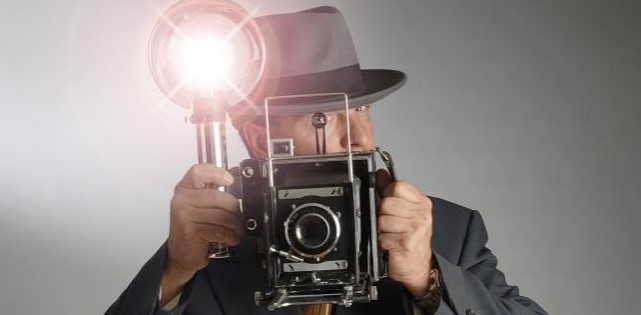If you have ever stood for a picture and had green or purple spots float around after the flash went off, you may have wondered if the flash had damaged your eyes. Once your vision returns to normal, you might wonder if further exposure to the flash could permanently damage your eyes.
How Does the Flash Work?
The flash is a burst of light that improves the brightness of a photo. It lasts around 1/400th of a second, and most flashes use low-wattage LED bulbs today. The photographer can change how much light is produced or how long the area stays lit, which all depend on the natural light available and the type of photo they are taking.

LED lighting is known to emit blue light. Blue light has been found to increase your risk of age-related macular degeneration. In addition, if you are frequently exposed to blue light, they say that you can suffer irreversible loss of retinal cells and your visual sharpness will be reduced. You may not be exposed to a flash very often, but you are exposed to blue light when you look at your smartphone, your tablet, or your television screen.
Is the Flash on a Camera Safe?
Generally speaking, the flash on the camera is safe for your eyes. This is because of three things: the focus, the intensity, and the exposure. First of all, you are only exposed to the flash for 1/400th of a second most times you see one. This is a very small amount of time.

The studies that are out there show that you need to stare at a bright light such as a flash for at least 100 seconds before you suffer permanent damage. Other studies suggest that your eyes may be damaged after 30 seconds, but either way, the flash doesn’t come close to either.
The flash on a camera isn’t intense enough to cause damage to your eyes. The waves from the light aren’t as powerful by the time they reach your eyes because the light dissipates quickly as it travels. The intensity of the light decreases more as you get further away from the flash.
Finally, the light from the flash isn’t focused on your eye. The light moves out in different directions, so you will never feel the full power of the light. This is different from a focused light such as a laser beam that can be sent directly to your eyes.
What Are the Blind Spots You See After a Flash?
When you look at a bright light, including a flash, you might see dark spots or colorful spots just after the exposure. With a flash, people often see green or purple spots. They call it “flash blindness” because the bright light does overwhelm your retina, which causes these spots to appear.
Your retinal pigment is bleached by a bright light temporarily, and then it returns to the way it should be when this pigment regenerates. If this happened with an intense light, you could end up with a permanent retinal burn where the retinal pigment is unable to recover.
Can the Flash Harm a Baby’s Developing Eyes?
Nurses in the maternity ward at the hospital say that it is okay to take pictures of newborn babies with a flash. The key is to make sure that the flash is short and from a distance. Babies do have developing eyes, so it is a good idea to limit how often they are exposed to a flash.
Can the Flash Harm Your Pet’s Eyes?
Animals have different eyes from people, and some want to know if the flash will harm their pets’ eyes. The answer is that it will not. As long as you are using a standard flash that lasts 1/400th of a second, it will be fine. However, your dog or cat may not like the flash, which can be challenging. If this is the case, you might not want to use it for your pets.
Can Artwork Be Damaged by the Flash?
This is actually a good question because many museums and other places have a policy that no flash photography is allowed. People wonder if this rule was made because the flash will harm the artwork.
First of all, they have this rule because there might be copyright issues. The artists usually have full rights over the art, which means that it can’t be reproduced by someone else. Another reason is security because a photograph could compromise the security. It might show details about where the exits are or where the video surveillance is, which can get into the wrong hands.
Finally, the flash could, in fact, damage the artwork. Many paintings are sensitive to light, and it can lead to discoloration. This can happen with paintings that are older. While one isolated flash won’t do much damage, the cumulative impact of multiple flashes can discolor the painting.
It is also disruptive to people who are there to enjoy seeing the art. No matter what you might want to do, it is a good idea to respect the rules made by museums and leave your camera in its bag.
Final Words
If you were worried that a flash from a camera would damage your eyes, you can feel better knowing that it is highly unlikely to do any permanent damage. The flash is far enough away that the light is dispersed before it hits your eyes, and it only lasts 1/400th of a second.
